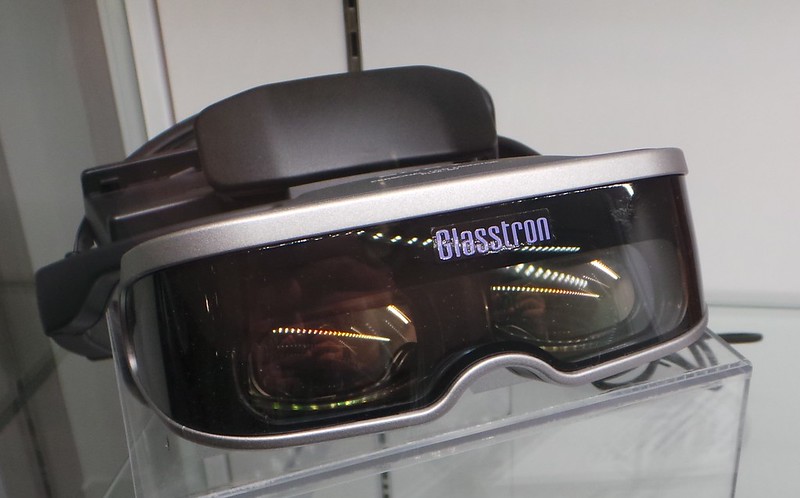Nokia promos
Nokia Looks to Free Netflix, Other Promos to Boost Lumia Sales – Ina Fried – Mobile – AllThingsD – do Nokia promos indicate the maturity of smartphone design or something else? Nokia also used to have a music service that had Nokia promos including 3 months of streaming, or downloaded tracks on the handset. I used to have a Hong Kong market Nokia 5800 ‘Comes with Music’ handset that had Eason Chen performing EDM inspired Cantopop. It isn’t only Nokia promos trying to shape smartphone marketing, I know magazine subscriptions were looked at a similar promotion on Samsung and HTC handsets via Flipboard.
Business
Chinese firms stumble in overseas operations|WantChinaTimes.com – stumbles is a strong word, interesting read though
Boeing’s Dreamliner nightmare continues as Japan Airlines defects to Airbus – Quartz
AMD posts $1.46 billion quarterly revenue, returns to profitability | Electronista
Seth’s Blog: Is Google jumping the shark? – interesting that Godin thinks this is isolated to Google
Consumer behaviour
Datagraphic: What Does it Mean to be Middle Class Around the World? – Analyst Insight from Euromonitor International
The not-so-mobile phone: How we really use our smartphones — mobileYouth®
Datagraphic: Understanding China’s Hugh Digital Footprint – already has the world’s highest number of Internet users and is the dominant smartphone market
The Emerging Middle Classes Beyond BRIC – Analyst Insight from Euromonitor International
Chinese immigrants find Australian small talk too awkward | South China Morning Post
What does the rise of Selfie Culture mean for marketers? — mobileYouth®
Third of millennials watch mostly online video or no broadcast TV | Poynter.
Young? Been online five years? Congrats, you are the ELITE MINORITY – Most of world’s youth still not ‘digital natives,’ study finds
Culture
Special mix from the Secret Garden People
Design
Fuck Yeah Internet Fridge – the ridiculousness of not considering context in technological design
Beijing Neighborhood Preservation: Is Design the Solution? | New Republic
Economics
Hong Kong peg ‘could last another 20 years’, says its designer John Greenwood | South China Morning Post – “A number of people take the view that the [yuan] could become fully convertible and a competitor international reserve currency with the US dollar and in that case, it might make sense to peg to the [yuan], but, in my view, that is many, many years away,” Greenwood told the South China Morning Post.
Will Chinese Economic Growth Slow in 2013?
Ethics
Microsoft offers differing takes on use of Kinect data for marketing | Ars Technica
Finance
Osborne’s open door to Chinese banks prompts MPs’ check on City rules | The Guardian
Wechat Membership Card Aims Big in O2O Market — China Internet Watch – O2O online to offline
Apple Passbook For Commerce And Payments – Business Insider
FMCG
Coke vs Pepsi in EMs: different strategies, same gloom – growth slowing in emerging markets
Groceries Become a Guy Thing – WSJ.com – through packaging design
Can Coffee Vending be Saved? – ahhh Klix machines
Vaseline – good Facebook global page example
Beyond Caffeine: The Prospects for Alternative Energy Boosters
Hong Kong
Hong Kong’s Enduring Identity Crisis – The Atlantic – the tension between Hong Kong and China
Cheap coffee triumphs over expensive espresso in giving caffeine fix | South China Morning Post – HK style milk tea & coffee 3 to 6 times more caffiene than expresso
How to
Matt Cutts Suggests Guest Blogging Only Be Done In Moderation | Search Engine Journal
3 Ways to Boost Your Facebook Login Conversion Rate Above 70%- Facebook Developers
Keyboard Shortcuts and Typing Tips for iPad, iPhone & iPod Touch
More features (faxinxi.la) in WeChat – Step by step with Screenshots
•Organize activities;
•Initiate votes;
•Collect signature;
•Post articles;
•Send greeting cards.
Ideas
All Is Fair in Love and Twitter – NYTimes.com – the monomyth is a myth
The Future is Near: Top 10 Forecasts Beyond 2014 – The Conference Channel Blog
Innovation
New nano-material could boost solar panel efficiency as high as 80% | ExtremeTech
GCR – Innovation – How Japan plans to beam power direct from space by the 2030s – straight up science fiction, I remember seeing NASA futurist pictures from the 1970s showing a similar concept
US Military Scientists Solve the Fundamental Problem of Viral Marketing | MIT Technology Review
Moore’s Law gets very warped in the sub 20nm era
U.S. Army Research Office Backing 4D Printing with $855,000 Grant
Physicist recalls witnessing Higgs particle’s discovery at CERN | South China Morning Post – awesome article on science (paywall)
Using Artificial Intelligence, Japan Just Launched A Rocket On The Cheap | Fast Company | Business + Innovation
Panasonic Kisses Plasma Goodbye | EE Times – rather sad as plasma screens do provide an image with superior contrast to LCD screens
Patent Troll Intellectual Ventures Running Out Of Cash; Looking For $3 Billion From Investors | Techdirt
Why Kickstarter projects are always delayed
Luxury
Five Key Trends in Global Luxury Goods – Analyst Insight from Euromonitor International
Marketing
Study: Are Digital Trends Driving a PR Industry ‘Identity Crisis’? – In2
Media
Hakuhodo develops Asia version of X-Advance measurement tool – Campaign Asia
Murdoch calls for world+dog to ‘expose’ Google • The Register – unfortunately Google is now as powerful as Murdoch used to be
Engagement with mobile video is three times higher than desktop: stats | Econsultancy – The average CTR for mobile is 13.64% (compared to 5.45% on desktop)
Facebook Removing Option To Be Unsearchable By Name, Highlighting Lack Of Universal Privacy Controls | TechCrunch
The footnote in Twitter’s IPO filing that tells a tale of civil war among its founders – Quartz
Maybe news is just more efficient — BuzzMachine
Pew surveys of audience habits suggest perilous future for news | Poynter.
How efficient is Twitter’s Business Model? – not terribly
Ad groups prepare for “cookieless” future, develop opt-out tool for alternative tracking | The Technology Chronicles | an SFGate.com blog
MediaPost Publications Men, Women, And Media: United by Media, Divided By Content 10/02/2013
Online
I, Cringely Breaking Moore’s Law – I, Cringely – or why the dot com era drove the current cloud era
Welcome to Sulia – interesting knowledge / social search service
Port.fm – awesome music streaming site
Kevin Systrom, Instagram’s man of vision, now eyes up world domination | Technology | The Observer
Data Discrimination Means the Poor May Experience a Different Internet | MIT Technology Review
Forget organizing the world’s information, this company wants to make sense of it – Quartz
Retailing
How Pinterest Puts People in Stores – Harvard Business Review
44% Of Consumers Showroom Frequently
The Secrets of Bezos: How Amazon Became the Everything Store – Businessweek – A peek Inside Amazon: “Frugality breeds resourcefulness, self-sufficiency, and invention.”
Security
Back door found in D-Link routers – D-secret is D-logon string allowing access to everything A group of embedded device hackers has turned up a vulnerability in D-Link consumer-level devices that provides unauthenticated access to the units’ admin interfaces
‘De-Americanization’ may have just become China’s new word for fighting political reform – NSA surveillance
A Chat with the Makers of Don’t Snoop Me Bro, a New Fool-Proof Encryption Tool
anonymity is hard – Hacker OPSEC
Hackers Target AT&T to Vodacom in SIM-Card Scam – Bloomberg
Software
Art, Copy & Code
Apparently a lot of that TAT (The Astonishing Tribe) talent left BlackBerry Sweden to start a new company called TOPP… | CrackBerry.com – not good
Technology
HP: We’ve Been a Little Late to the Game, Admits Whitman; MSFT, INTC ‘Outright Competitors’ – Tech Trader Daily – Barrons.com
HP CEO Signals Wintel Alliance May Be in Its Final Days – post PC era?
Telecoms
Revolutionary Coming-of-Age? | Welcome to CIMI Corporation’s Public Blog – interesting post on SDN
Web of no web
Oculus Rift Brings Virtual Reality to Verge of the Mainstream | MIT Technology Review
Wireless
NTT Docomo Finally Gets The iPhone, But Subscribers Still Flee Due To Low Stock | TechCrunch
New Sony smartphone strategy shifts away from U.S. – In an effort to become a dominant force in the competitive smartphone space, Sony is refocusing its business to markets that already constitute 60% of its smartphone sales: Europe and Japan
And Then Steve Said, ‘Let There Be an iPhone’ – NYTimes.com – reads rather similar to Steven Levy’s original Mac story Insanely Great
Apple’s iPhone 5s tops sales charts at big 4 US carriers, iPhone 5c close behind
Samsung execs shown confidential Apple-Nokia patent license terms, allegedly misused information

